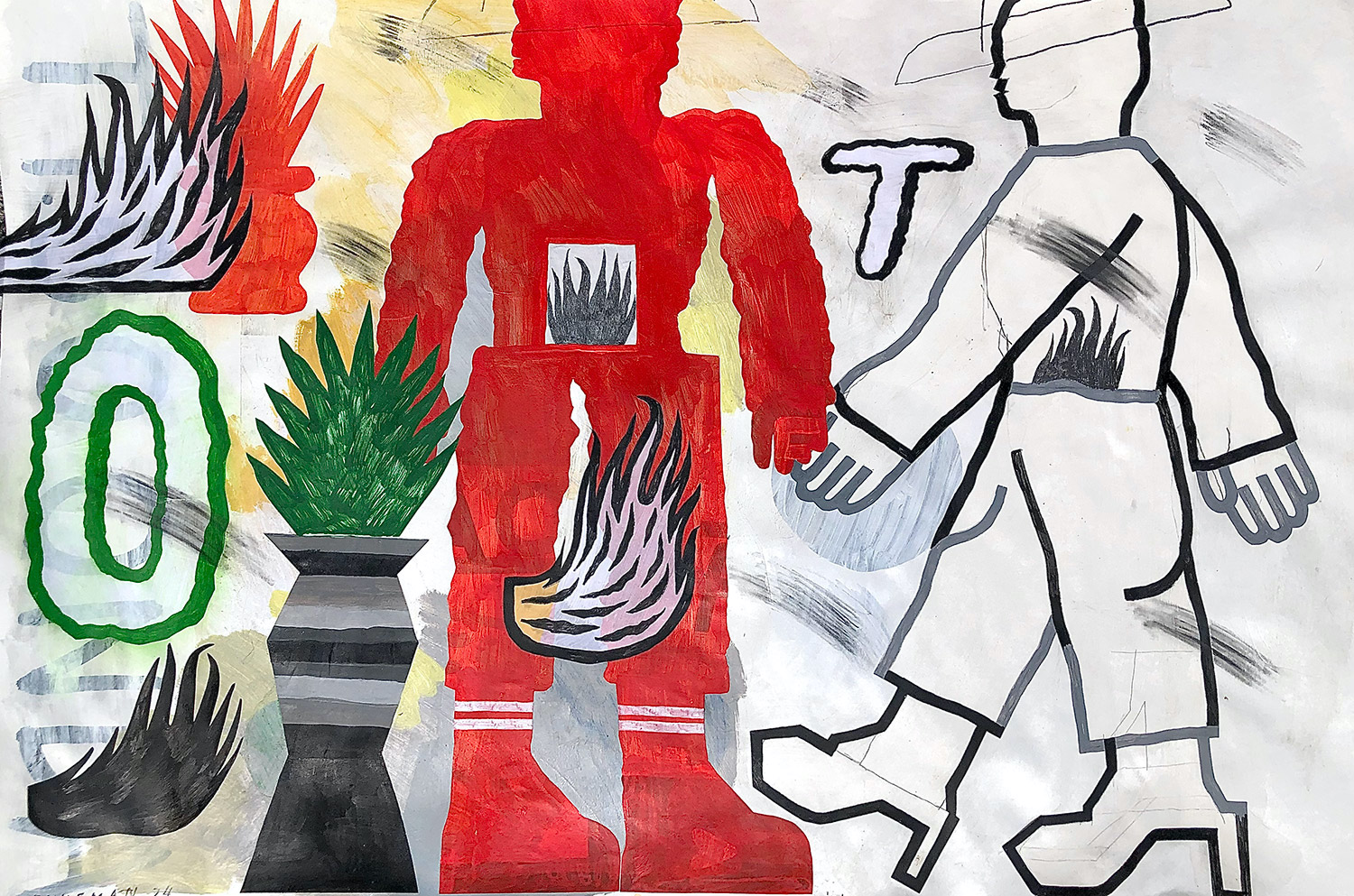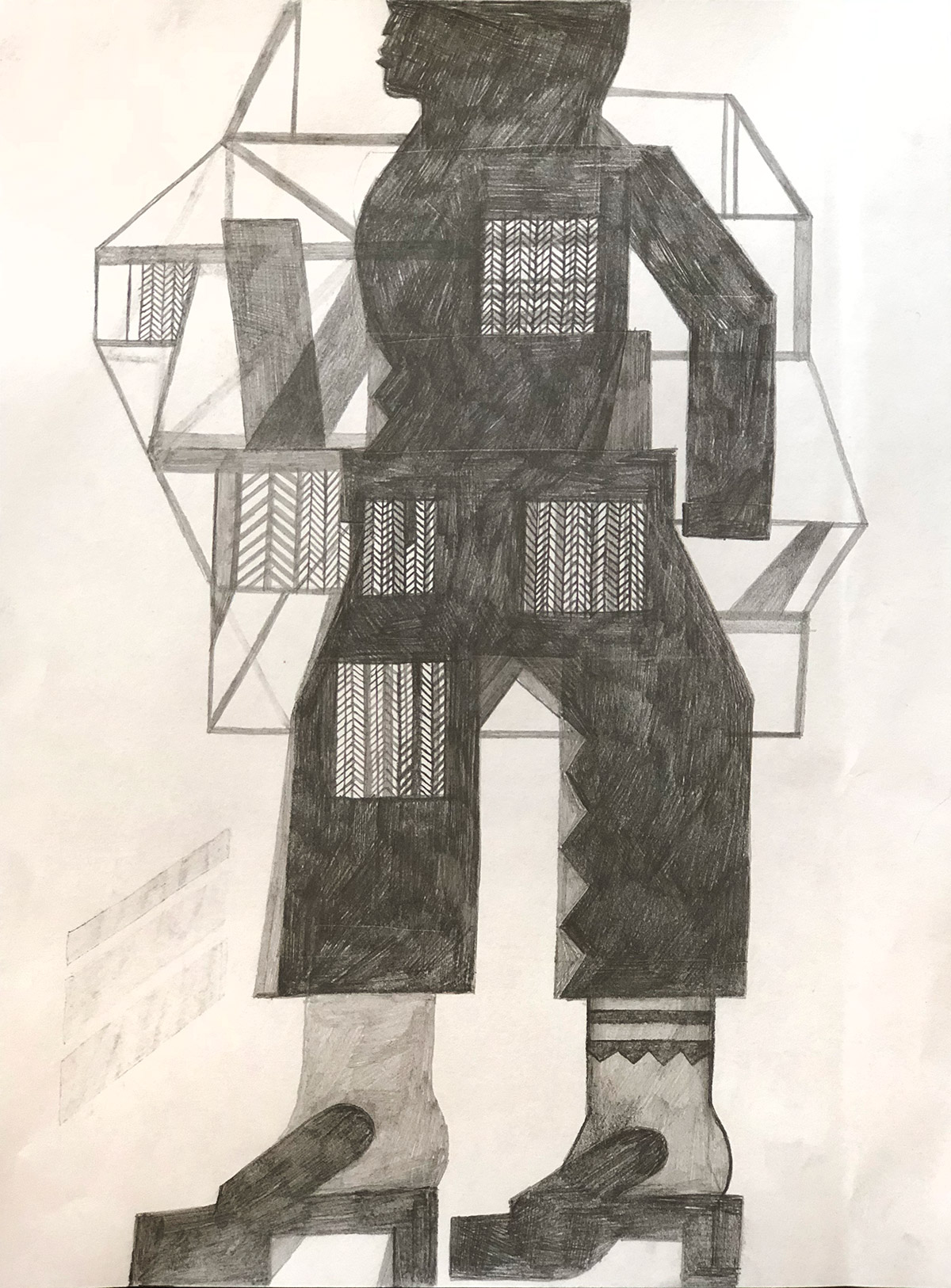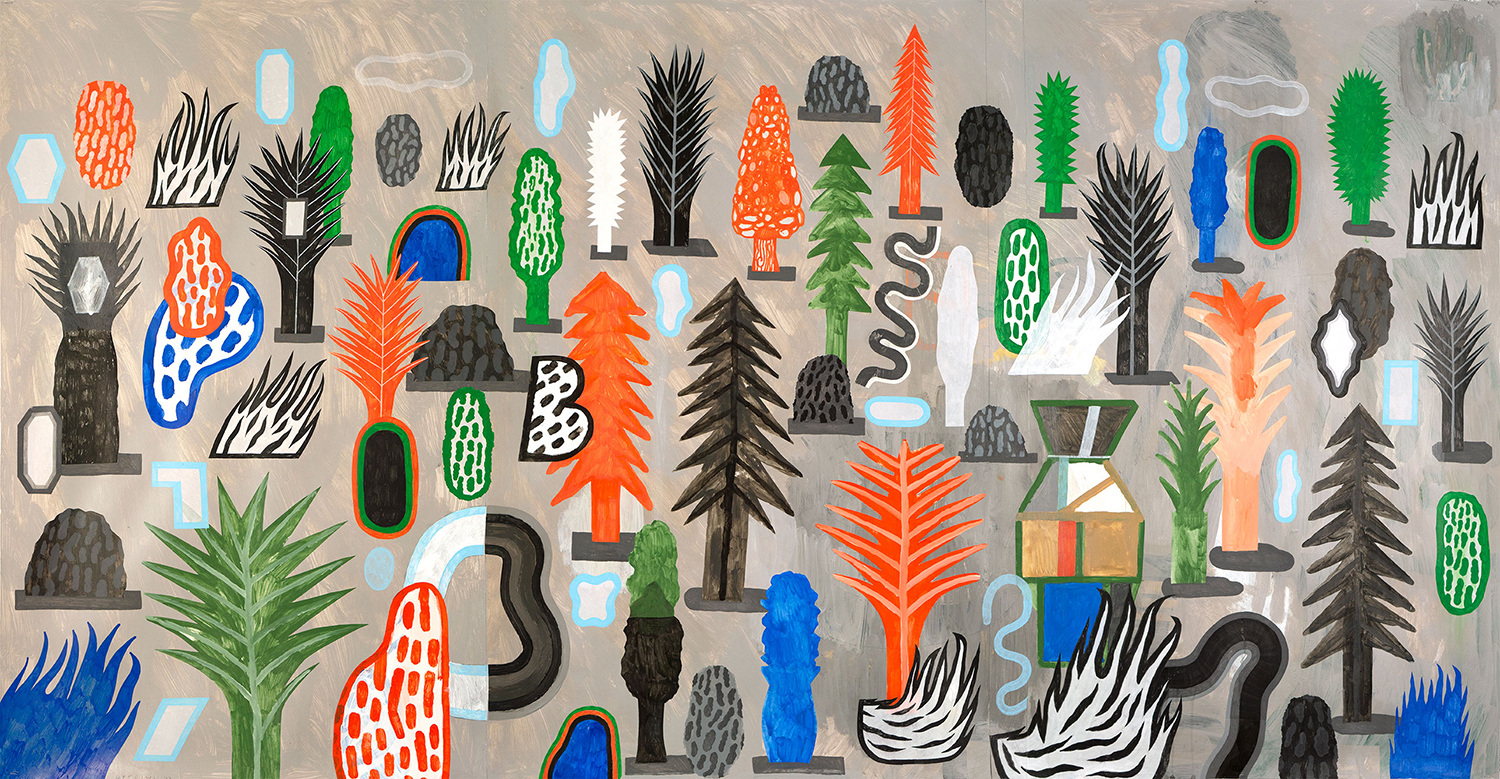Warren Dykeman: FAST FLUX TEST
September 14 – October 26, 2024Warren Dykeman’s fifth solo exhibition with studio e, FAST FLUX TEST foregrounds the central role that drawing plays in the artist’s practice, pairing recent paintings with graphite works created since 2017.
Guest curated by Amanda Donnan

Press Release
Warren Dykeman’s fifth solo exhibition with studio e, FAST FLUX TEST foregrounds the central role that drawing plays in the artist’s practice, pairing recent paintings with graphite works created since 2017. The exhibition opens September 14th as part of Seattle Art and Culture Week with a public reception at the gallery from 5:00 to 7:00 and is guest curated by Amanda Donnan.
Dykeman’s unmistakable sensibility brings absurdist humor to a rudimentary style informed by both folk art and modern design. Using traditional artistic mediums and the digital tools of his graphic design profession, the artist toggles between screen space and the surface of paper or canvas, between scribbling with his mouse and drawing with pencil, markers, and acrylic paint. FAST FLUX TEST focuses this multifaceted approach to mark-making in Dykeman’s work, bringing together paintings made since 2023 with an expanded selection of graphite drawings that distill the artist’s distinctive vocabulary. The largest and newest of these, Baskets (2024) takes the form of a gridded assembly of individual drawings on ruled notebook paper and suggests an index of characters (in the typographical and narrative senses of the word).
Art making is for Dykeman a place to break the rules of graphic design and search out “the right kind of wrong”— an awkwardness that communicates the vulnerability and strangeness of being human. His blocky figures in “big dumb boots” and oversized hats have an imperfect, iconographic simplicity that recalls vernacular signage and the work of self-taught artists such as Bill Traylor and James Castle. Graphite drawings like Rock Soup (2024) and Gene Palma (2024) exemplify this quality, achieving a sense of rigidly frontal, font-like legibility even as their meaning remains elusive or non-sensical. Up close, the tonal shifts and patchworks of directional pencil strokes in these and other drawings give them a subtle texture and layered depth. The artist carries this approach over into paintings like Fire in the Belly (2024) and Boss Hog (2023), filling shapes with parallel strokes and employing the translucency of thinned paints to superimpose various forms.
Dykeman amasses bins of hand-drawn and cut-out figures, potted plants, burning wigs, fort structures, and other curious “items,” as he calls them, to collage together in large compositions he calls “stacks.” In Portals (2024), for instance, a profusion of cut-and-paste and directly applied objects are arranged in the shallow space of a mostly monochromatic background. The artist similarly uses the computer workspace as a gathering place for digitally drawn forms that can be vectorized and endlessly rearranged. Sometimes his creations made in a vector program serve as preparatory sketches that he loosely translates into paintings. Alternately, to make works such as Bata (2024), he projects computer-sketched elements onto the surface and directly translates the enlarged, pixelated lines of the blob brush tool into the saturated colors of acrylics.
The Fast Flux Test Facility referenced in the exhibition title is a “fast neutron” nuclear test reactor at the Hanford Site in central Washington, near the town of Kennewick where Dykeman grew up. The research facility was completed in 1978 and operated throughout the artist’s adolescence, long after the neighboring plutonium-producing reactors that fueled WWII and Cold War atom bombs were decommissioned. Dykeman has frequently referenced Hanford and the industrial structures of “the area,” as the strictly classified complex was known to locals. While “Fast Flux Test” appeals to the artist for the sound and feel of the phrase, it also captures the catalytic experimentation and synthesis at the heart of his practice.










